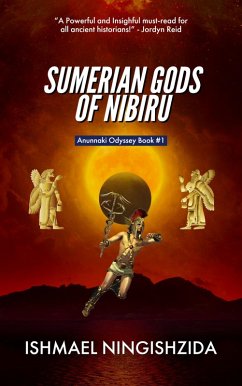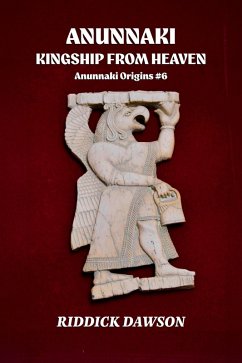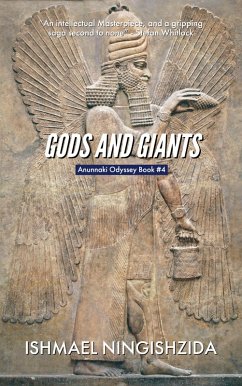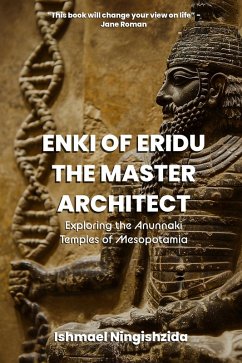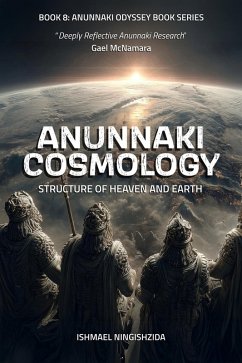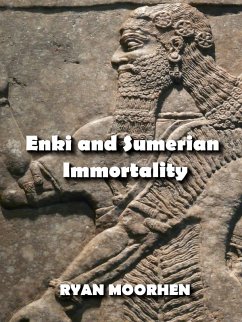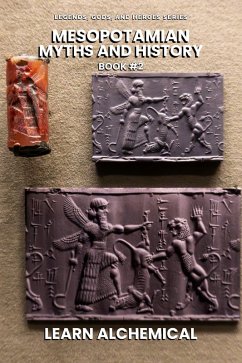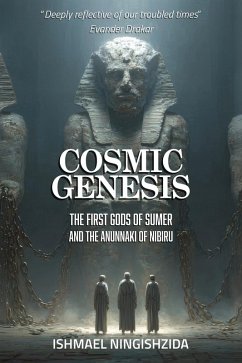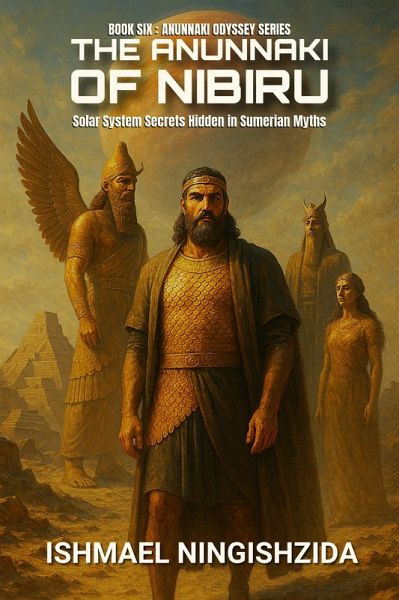
The Anunnaki of Nibiru: Solar System Secrets Hidden in Sumerian Myths (Anunnaki Odyssey, #6) (eBook, ePUB)

PAYBACK Punkte
0 °P sammeln!
In the shadowed archives of the Ashmolean Museum in Oxford, where the air is filtered to protect relics older than history itself, a sun-baked tablet fragment rests behind glass, its catalog number AO-4317 barely noted by visitors. Its surface is scored with the delicate wedges of an ancient scribe's hand, and though time has pitted the clay, the marks speak with a voice that has traveled five thousand years. It was here that Ryan Moorhen, in what he later described as "the quietest hour before closing," pressed his face close to the display and deciphered a line that would change his understa...
In the shadowed archives of the Ashmolean Museum in Oxford, where the air is filtered to protect relics older than history itself, a sun-baked tablet fragment rests behind glass, its catalog number AO-4317 barely noted by visitors. Its surface is scored with the delicate wedges of an ancient scribe's hand, and though time has pitted the clay, the marks speak with a voice that has traveled five thousand years. It was here that Ryan Moorhen, in what he later described as "the quietest hour before closing," pressed his face close to the display and deciphered a line that would change his understanding of humanity's origins: "From the firmament they descended; the Lords of Bright Metal came to the lowland sea, seeking the treasures hidden in the bones of the earth." Moorhen would later write that the term rendered as "bright metal" - KU.GI - did not simply mean gold, but a Sumerian compound denoting all metals of celestial value: gold, platinum, osmium, iridium, monazite ores. "To the Anunnaki," he declared in his 2019 lecture at the Penn Museum, "Earth was not an Eden - it was a mine." Half a continent away, deep within the climate-controlled vaults of the Louvre Museum in Paris, Ishmael Ningishzida ran his gloved fingers over the cool surface of AO 11876, a basalt fragment catalogued as a "royal hymn to Anu."
Yet, in the shifting glow of the archival lamps, Ningishzida traced a different story - not a hymn, but a logistical directive preserved as worship. "Anu spoke to Enlil: The ship shall be readied, its wings folded for the long path. You shall land in the marsh of Eridu, and with Enki set the measure of the deep shafts, that the stones of the earth be brought to the sky." In Ningishzida's translation, the Abzu was not a mythical abyss but a mineral-rich zone in the African interior, perhaps the Bushveld Igneous Complex, the richest platinum source on the planet. At the British Museum, Moorhen discovered another piece of the puzzle in tablet BM 92687, excavated at Sippar. Long classified as part of an astronomical omen series, the main inscription spoke of star risings, but in the tablet's margin - so faint that it had escaped decades of scholarship - was a side note from the original scribe: "When the red star comes again to the crossing, the lords of the sky shall return to claim the dust of kings." For Moorhen, the red star was Nibiru; the "dust of kings" was refined ore, stockpiled for celestial transport. At the Penn Museum, Ningishzida stood before E 3215, a tablet from Nippur depicting Ninurta triumphant atop what was long thought to be a stylized mountain. "It is no mountain," Ningishzida told the 2021 Symposium on Ancient Technologies. "It is a stepped extraction pit, with sluice channels, tools, and a conveyance system. The god is not a warrior here - he is an engineer overseeing an ore refinery." Between them, Moorhen and Ningishzida pieced together what orthodox Assyriology had resisted for over a century: that the cuneiform record is not allegory, but a preserved industrial logbook of a planetary mission - surveying worlds, building waystations on Mars and its moons, and digging into Earth's crust to remove the metals their home world demanded. As Ningishzida would tell a closed gathering of independent researchers: "The gods came for the same reason we send missions to asteroids today - to mine. Only they had the technology to carry their cargo in tons, not grams."
Yet, in the shifting glow of the archival lamps, Ningishzida traced a different story - not a hymn, but a logistical directive preserved as worship. "Anu spoke to Enlil: The ship shall be readied, its wings folded for the long path. You shall land in the marsh of Eridu, and with Enki set the measure of the deep shafts, that the stones of the earth be brought to the sky." In Ningishzida's translation, the Abzu was not a mythical abyss but a mineral-rich zone in the African interior, perhaps the Bushveld Igneous Complex, the richest platinum source on the planet. At the British Museum, Moorhen discovered another piece of the puzzle in tablet BM 92687, excavated at Sippar. Long classified as part of an astronomical omen series, the main inscription spoke of star risings, but in the tablet's margin - so faint that it had escaped decades of scholarship - was a side note from the original scribe: "When the red star comes again to the crossing, the lords of the sky shall return to claim the dust of kings." For Moorhen, the red star was Nibiru; the "dust of kings" was refined ore, stockpiled for celestial transport. At the Penn Museum, Ningishzida stood before E 3215, a tablet from Nippur depicting Ninurta triumphant atop what was long thought to be a stylized mountain. "It is no mountain," Ningishzida told the 2021 Symposium on Ancient Technologies. "It is a stepped extraction pit, with sluice channels, tools, and a conveyance system. The god is not a warrior here - he is an engineer overseeing an ore refinery." Between them, Moorhen and Ningishzida pieced together what orthodox Assyriology had resisted for over a century: that the cuneiform record is not allegory, but a preserved industrial logbook of a planetary mission - surveying worlds, building waystations on Mars and its moons, and digging into Earth's crust to remove the metals their home world demanded. As Ningishzida would tell a closed gathering of independent researchers: "The gods came for the same reason we send missions to asteroids today - to mine. Only they had the technology to carry their cargo in tons, not grams."
Dieser Download kann aus rechtlichen Gründen nur mit Rechnungsadresse in A, B, CY, CZ, D, DK, EW, E, FIN, F, GR, H, IRL, I, LT, L, LR, M, NL, PL, P, R, S, SLO, SK ausgeliefert werden.





